It’s time for one of the bigger, if not the biggest early review I’ve done, Akira. Akira is one of the biggest, if not THE biggest anime as far as us over here in the USA are often concerned with. Over the years with more and more big name releases it may get a bit more bogged down when it comes to discussions of the biggest things ever, but for anyone who got into anime years ago, Akira is the big shadow in the room.
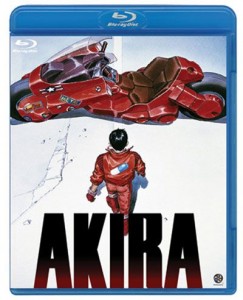
Getting to do the first review I know of of this disk nearly a month before it comes out anywhere in the world is just….awesome. Being probably one of the closest things anime fans will get to the must have Blu-ray, let’s take a look at how they did, including some new ground broken.
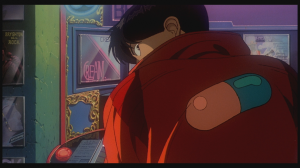
Starting with the packaging, Akira comes in a standard Blu-ray case. The first printing comes in a slipcover with a booklet, which will be discussed in the extras. The front of the slipcover is pure black, with the Akira logo gradienting from a bright red to a darker red, with Japanese text on top of the letters in white. The slipcover itself is a cheap cardstock that if you plan to keep, will require being very careful with as it bends easily. The case itself on the front has the familiar image of Kaneda walking to his motorcycle. The Akira logo is below it in big letters with a slightly different red to black gradient than the slicase. It’s a good quality case with a hub that holds the disk well, without making it hard to remove the disk.
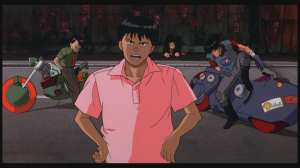
When you first turn on the disk you get a menu wanting to know if you speak Japanese or English, this slightly changes the copyright warning you see before the movie starts. The main menu itself is rather tacky, a very basic black overlay of the handles on a motorcycle (as though you were sitting on it) with a few city images. The overlay itself has very little detail. The overlay part of the menu itself is also the pop up menu.
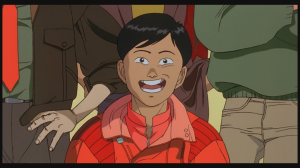
Akira is one of those movies that trying to do a review of the film itself is…well, I just don’t know where to start, and I also don’t want to spoil it since some people haven’t seen it. An adaption of the manga, Akira begins in an odd and interesting way, the beginning of World War III. The movie skips over the war itself and starts 31 years later in Neo-Tokyo. I’m gonna avoid going to in depth into the film because, the fact so many people loves it means a review of the film itself isn’t necessary at this point. If you don’t like it, you aren’t interested in my opinion of the film anyways (ditto for those who like it), and those who haven’t seen it don’t need yet another person browbeating them with a long explanation why they need to see it (although you really should…) So I’m gonna swing right on over to the technical side.

The video on Akira is very good. The movie has been remastered yet again and it shows, the picture is gorgeous. It’s probably as close to perfect as the film will ever be. If you look closely there are some color issues, but I think that is more just the fact that the film is showing it’s age on a format that wasn’t even dreamed of at the time. All in all fantastic video with only one real flaw. Like a few other Bandai Visual releases (in Japan), the picture has a thing black border on all sides. Not necessary or wanted with most peoples equipment it does provide a mild annoyance while watching the film. For those who want to know, the video bitrate average is 19583 kbps and uses the AVC codec.
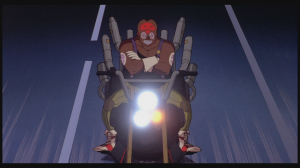
Now the audio on this set is… well frankly, it may be the most amazing audio I’ve ever heard. The booklet talks about it in detail and the case has a logo for ‘Hypersonic’ (the book explains it in detail), and I sorta laughed and took it as Bandai Japan bragging over something that I figured would be really nice, but definately not as great as they suggest (the first page of the booklet refers to it possibly having the greatest sound quality of ANY media release ever for the primary Japanese track. After listening to it, I’m inclined to agree. The audio is amazingly rich and detailed. While Akira has always been well know for it’s audio, this is just phenominal in every way. They also include the 2001 English Pioneer dub as a lossless Dolby TrueHD track. There are also two alternate Japanese tracks. Right below is detailed info on each audio track (average bitrates).
Japanese Track 1- Dolby TrueHD (lossless), 5.1, 24 bits, 192 kHz, 14340 kbps
English Track- Dolby TrueHD (lossless), 5.1, 16 bits, 48 kHz, 1466 kbps
Japanese Track 2- Dolby Digital, 5.1, 48 kHz, 640 kbps
Japanese Track 3- PCM (uncompressed), 2.0, 16 bits, 48 kHz, 1536 kbps
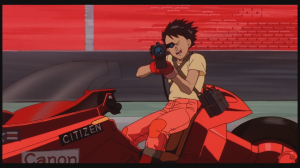
Since it is a pre-existing dub for this release, and a relatively well known one, I won’t be reviewing the dub this time, although I will mention it’s unfortunate that the Streamline dub was not included in some way considering that the audio in Akira is important enough that they included three different versions of the Japanese audio (although I do love the Pioneer dub, having the cast members of Digimon using the same voices and cursing and being punks was quite amusing when I was in high school).
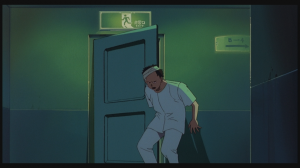
Extras are a very low point, especially since we’ve seen more in the past. This release of Akira has two teaser trailers, 2 trailers, a television commercial, and nearly 400 pages of storyboards (which appears to be nearly every storyboard used in the making of the film, notes included). The large collection of extras from Pioneer’s two disk set is nowhere to be found here. Things like the hour long production report, the sound clips, and the interview with Otomo (along with other extras I’m sure I’ve forgotten) are greatly missed, and frankly mar a nearly perfect release of a classic film. The first printing comes with a slipcover and a booklet. A decent chunk of the booklet is explaining the ‘Hypersonic’ process that led to the new audio on the disk, but there is plenty of other content that I will leave for those who are lucky enough to get ahold of a copy of the disk that includes it.
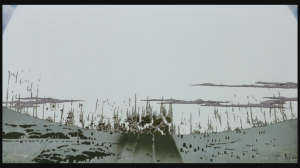
Akira is one of those name things that every anime fan should see at some point. It hasn’t stuck around for so long because it doesn’t deserve all the acclaim it gets. Beyond being a great animated film, it’s a great dramatic film. This Blu-ray has great video, amazing audio, and a lackluster supply of extras. If the movie weren’t good the greatest audio in the world wouldn’t convince me to recommend a disk (and this disk may in fact have the greatest audio in the world), but for a movie like Akira I can’t recommend it enough, even if the best I can convince someone is a rental, because chances are, when you return the film, whether it’s this Blu-ray, the old DVD, or you somehow track down a VHS of the Streamline dub, at some point you will come across this Blu-ray on a shelf and leave with it. It may be the best anime, it may not (it isn’t for me personally), but it really is one of the greats.
Movie: A (One of the great anime films. May be a bit confusing for some, but it is one of those things that everyone needs to see once.)
Packaging: A- (Comes in a nice sturdy Blu-ray case with one of the most well known images of the film. The slipcover for the first printing is very flimsy though.)
Video Quality: A- (Great video. Some minor issues pop up, but nothing that most people will ever notice. The black border gets a bit annoying and knocks the grade down from what would have been a solid A)
Audio Quality: A+ (What may be the best audio ever released. I considered knocking it down to an A because of the lack of the Streamline dub, but having the Pioneer dub lossless, and the utterly amazing Japanese TrueHD track made it so I just couldn’t give it anything less)
Extras: C+ (While many known extras are missing, the amazing collection of storyboards moves this from a D or D+ to a C+ just on the number of storyboards.)
Overall (not an average): A (One of the anime greats, remastered yet again. With great video and audio that I’m nearly getting tired of calling amazing, I’d say this is a must buy for anime fans anywhere).
Addendum- There is no region markings on the case anywhere so I think the disk is region free, not 100% sure though.
Gallery under ad. All caps are lossless PNGs that were originally saved as BMPs then compressed to the PNG files, feel free to request more. (Caps are sized 1920×1080)













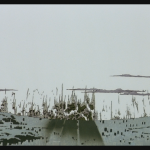
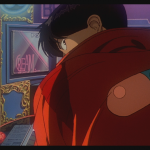
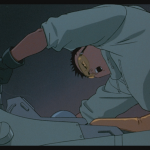

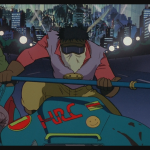



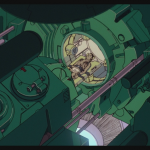


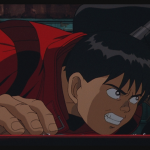
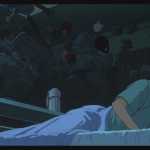
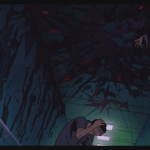
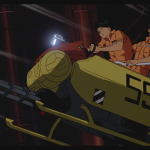
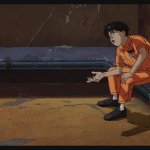
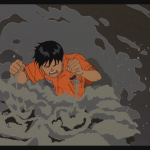



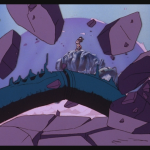

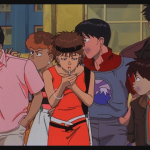
Pingback: Akira Blu-ray Disc: Erstes Review und Screencaps | Affenheimtheater